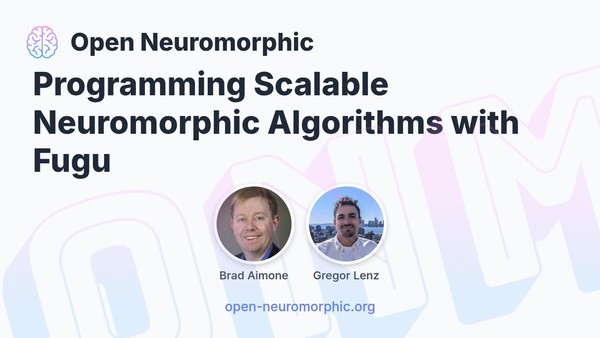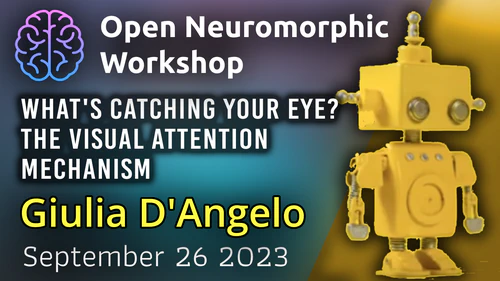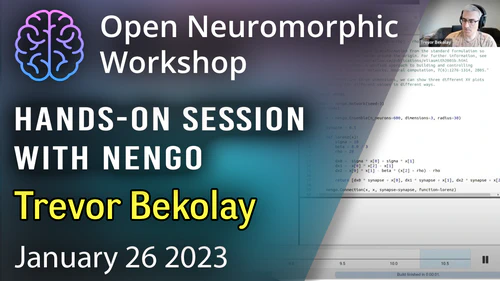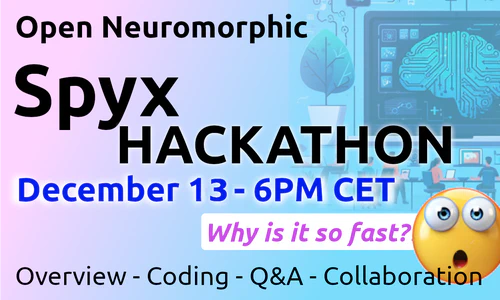Fugu is a high-level framework specifically designed for developing spiking circuits in terms of computation graphs. Accordingly, with a base leaky-integrate-and fire (LIF) neuron model at its core, neural circuits are built as bricks. These foundational computations are then combined and composed as scaffolds to construct larger computations. This allows us to describe spiking circuits in terms of neural features common to most NMC architectures rather than platform specific designs.

Upcoming Workshops
Inspired? Share your work.
Share your expertise with the community by speaking at a workshop, student talk, or hacking hour. It’s a great way to get feedback and help others learn.






